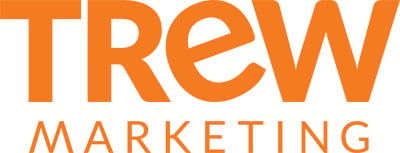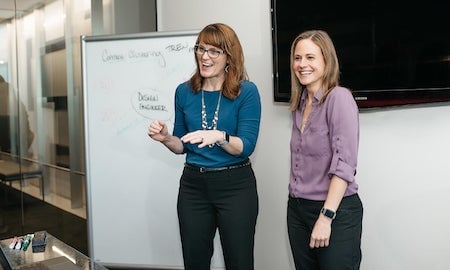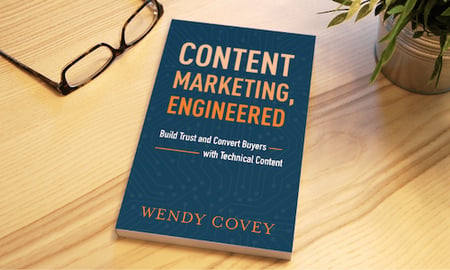16 min read
Media Miniseries | Successfully Pitching Media with Lisa Peterson
 Morgan Norris
:
12/16/21 10:00 AM
Morgan Norris
:
12/16/21 10:00 AM
In the Content Marketing, Engineered Media Miniseries, we’re learning from media experts about how working with external news outlets and trade publications fits into your content marketing strategy. Today, we're learning how to pitch media successfully, and what goes into a successful media relations campaign.
Through this Media Miniseries we've learned that a lot goes into securing coverage in publications (whether paid placements or editorial coverage).
In today's episode, Lisa Peterson, owner of Lisa Peterson PR, talks with us about how to engage with journalists. Lisa has spent decades pitching reporters, building relationships, and securing coverage on behalf of clients -- both B2B and B2C. In agreement with other guests we've had during this series, Lisa believes that pitching journalists isn't a single path to building a brand -- you need a strong message and a diversified approach to marketing in addition to a public relations strategy.
In this interview, Lisa shares valuable tools and processes she uses to identify and pitch the right journalists. The advice she shares is practical whether you're just spending a few hours a month engaging with journalists or taking on a full-fledged PR effort.
Resources
- Need training to write the content you'd use on a forum? The Content Writing, Engineered Course starts 2/7/22
- Lisa Peterson
- See all of the Media Miniseries episodes
- Morgan Norris, host of the Media Miniseries
- TREW content development services
Transcript
The following transcript was created by an AI Bot which has yet to learn slang words and some technical terms. While it is no substitute for watching/listening to the episode, transcripts are handy for a quick scan. Enjoy!
Today, we're talking to a longtime PR expert to find out how to get our companies in the media and what it looks like to build a healthy, thriving media relations program. Welcome to the Content Marketing, Engineered Media Miniseries, where we're learning from media experts about how working with external news outlets and trade publications fits into your content marketing strategy. In today's episode with Lisa Peterson, we'll cover media relations. We use the term earned media a lot in this episode. Earned media is when your company is featured by journalists and their editorial content.
This content is just what it says. It is. It's earned. You can't purchase it. Instead. You meet with journalists, share your story, talk about your product or service, and if they find what they hear compelling, they'll write about it. In this episode, we talk through five key elements of a PR campaign. We talk about how to connect with Editors, and we also talk about the role of in person events as well as other topics. Right off the bat. I make a quick mistake when I say that Lisa was at Dell for ten years.
In fact, it was only five years. But when you hear about the campaign she led and all the awards that she won, it's easy to assume it was longer. At the end of this episode, Lisa gives her number one step that anybody can do this week to start the basics of a media relations campaign, and it's easier than you think. So make sure you listen for that at the end. Welcome to Content Marketing, Engineered. Your source for building trust and generating demand with technical content. Hi and welcome to Content Marketing, Engineered.
As you may have noticed, I'm not Wendy Covey . I'm Morgan Norris, a senior brand and content strategist, and I'm hosting this media miniseries for Wendy to take a deep dive into technical B2B media from editorial to advertising to trade publications. We're going to figure out when and how to pursue media opportunities to build your brand, gain that leadership, engage with the technical community and promote your products and services. I hope you leave each episode of this mini series ready to take action before we begin.
I'd like to give a brief shout out to our agency, TREW Marketing TREW is a full service agency located in Austin, Texas, serving highly technical companies. For more information about TREW, you can visit trewmarketing.com right.
Hi, everyone, and welcome to another episode of Content Marketing Engineer. Today I am joined by Lisa Peterson. Lisa owns a PR firm in Austin, Texas. And prior to that, she spent a decade in global communications at Dell. And even before that, worked at various PR agencies representing technology brands and everybody from MC Jagger and Serialton John to Price Waterhouse. So you've got a lot of knowledge and experience here. And Lisa so welcome, Lisa.
Thank you, Morgan, for having me.
Yeah. So tell me a little bit about yourself and what you do kind of day to day right now. Okay.
Perfect. So a little bit about me, like you said, I got my start working with some celebrity PR in Manhattan. And this is back in the day. I'm going to date myself. But this was back in the day when we did internships before we graduated College. So I was in New York interning, and it turned into a four year stent doing celebrity PR. Then I made the move to Austin and realized that really the only PR opportunities for tech. I was coming from a music background. I thought that I was going to get to come into Austin, the live music capital of the world.
But there weren't exactly necessarily, quote, unquote to make Jaggers down here. So I was like, so I had to ramp on technology very fast and ended up at Porter Valley, where I got a ton of experience working with everything from the smallest Silicon Valley start up to some of the biggest Fortune 500 companies around, like PwC, Yahoo, HP, things of that nature. After a few years of Porter Navelli, I then went to Dell, where I ran North America consumer PR for five years. Then I took a few years off to become a mommy.
And so I've got a little six year old at home and have recently hung my own shingle and have started my own consulting firm, Lisa Peterson VR.
Awesome. I love that. And it sounds like you probably were able in the beginning of your career to really grow with some of those tech companies if they were kind of booming out of Boston.
Absolutely.
Great experience. So Lisa is here today, and one thing I really want her to focus on and just help us understand is what it is like to work with media. I was telling Lisa before we got on. I think it's so easy to have a product or kind of have a new idea or a new service you're building and say, hey, let's get this in the press. And it is so much harder than just saying that. I know it involves years and years of investment and relationship management and things like that.
So tell me a little bit about if somebody is thinking about getting involved in media relations or a media outreach type of program, what even goes into that? What are kind of the core elements of a media outreach program?
So first of all, I think there's five core elements for a media relations program. And the first one is research. So before we ever even pick up the phone or do anything with any press, we have to research these targets. So ways to do that are researching competitors, going to Google, researching your competitors and then identifying who is most appropriate at that outlet to talk to you. So what we'll do is we'll find relevant coverage. And then we also work with two primary media software companies. They're called Vision and MuckRack.
Okay.
And I see a lot of companies using these services internally as well on their own. So those are a couple of cool software companies to look into.
Tell me about MuckRack. So I know we use Cition for news wiring for news wiring. What else do you use Susan for? And then tell me about Mukrak in general.
So I use Citizen for my list building.
Okay.
And Citizen is pretty comprehensive. You're able to do editorial calendar pitching from there. That's when magazines list out in advance the stories that they're going to be working on each month. And so you have opportunities to get in front of those and pitch those. But they also include the media contact information. So if I'm Googling and I'm seeing that your competitors getting picked up in a certain publication, I'll look at that reporter's name and decision, or Mucrac. Figure out the reporter's contact info and click add them to our press list.
And you have to do that for each person. So you research that's. Number one, you identify the target, make sure they're appropriate. You vet that target by continuing to do a little bit more research. I often pull up their Twitter accounts and look and see what they've been tweeting about recently. What they've been writing about recently. The fourth step is to engage with the reporter. Once you have figured out that that reporter is perfect for your product, and then the fifth part of that is measuring message, pull through and measuring the results of the outreach that you have done.
But I just want to clarify, if I might speak on behalf of all PR people across this nation, public relations is not fast. It is a relatively slow strategic art. Actually, it is actually considered an art. And to build those relationships, you need to be pitching the right person at the right time, because there's fewer reporters these days that are covering more beats. And they're just as crazy as we are sometimes.
Yeah. So when you're vetting those contacts, are you looking for relevancy? What are you looking for? Who's a good contact for you when you're looking on behalf of a client, what makes sense?
Yeah, exactly. I've got a perfect example of this. So I just started working with a new client. I'm going to promote them, but they're called the Jogo Brewing Straw. It's really cute. It's a little metallic straw. You can use coffee and tea.
Okay.
So I'm pitching them for holiday. So in vetting these people, I'm going and looking at other products that are similar and seeing where they're getting picked up. Stealing those contacts. Also looking at holiday gift guides in general and seeing all these reporters. So Glamour, L, Vogue, Men's, Health. All of these guys should have their holiday coming up soon. So I'm seeing that they're already starting to write holiday. So those are people that I'm going to target for my own product. So that's going through the process of vetting, seeing what they're writing, checking them out, see what they're tweeting about recently before ever reaching out.
That's my strategy. There are other people that do mass emails and things like that, and that's not advisable. You really want to personalize a pitch to a reporter?
Yeah. So tell me this. So you're talking about engaging, engaging those people in the media. So say, I'm an engineering company that is new to media relations completely. Am I ever going to kind of make it through someone's inbox when they've been working with a large company like Dell for decades and decades, and they've got a relationship built there. How does somebody even kind of stand up to that? The big presences are already there.
Well, there's always reporters that are looking for the next big thing. So you shouldn't be discouraged, that's for sure. And if your competitors are getting covered, there's a good chance that you're going to get covered as well.
Yeah, that's great. So as far as that goes, I've built kind of a list of a handful of people. What does it look like to build and maintain relationships with those people? So I know over time, especially when you've got products that are targeting a similar audience. You found these are the outlets that I think are right. These are probably the right people. So what does it look like to even maintain relationships with Editors? It's got to be two way, right. You can't just be sort of pitching kind of yelling at them all the time.
They've got to be benefiting from it. So what are those relationships look like when they're healthy and maintained?
Well, absolutely. And by the way, I do think Kova has had a significant impact on our ability to make and keep those relationships right now with my clients. For a lot of them, I'm pitching blindly because they're not people that I know.
Yeah.
But over the years, I've developed really close relationships with press, and a lot of times that's done in person. So if you have a product that could launch at your industry trade show, go and meet the press. Take your private precautions, do whatever you need to do. But go, you can start building those relationships once you have a relationship, maintain it like you would a friend follow up with them and say, hey, I saw your story this morning about such and such, and it really is an epiphany for me.
Thank you.
I think that's where you're going with that conversation. And that's really important because otherwise reporters are going to kind of feel used if you're only going to them with story ideas that you want, right? That's very one sided.
Take me back to the trade show. Comments. Trade shows have definitely been hurt by COVID expectation. You're going to a show say, you're going to a show at the end of the year. Are you trying to set up meetings with press before that show and kind of get them scheduled or booked. And then if you don't, is there a chance to meet people at the show? How do you find out who's going to be at the show? How do you give us some trade show? Kind of sure.
Yeah. And I'm dealing with that right now for a big real estate show that's coming up where my client is attending because they know a lot of people, but there's no way for us to get the press list because they're not exhibiting.
Okay.
So a lot of times when you exhibit at the show, you can typically gain access to the press list. And then, boom, you can hit them all yourself if you want and ask for a one on one meeting. Yeah, but if you don't have access to the press list, I'm just reaching out to my real estate industry publications and asking, hey, are you headed to the show next month? If you are, I want to set you up with the CEO.
Yeah. And then what do those journalists expect at that meeting? You come and give an overview. Do you walk them through a booth? Do you show them a demo of something? What are they expecting? And what would we need to be kind of ready for if we were able to secure a meeting with a journalist at a show?
Absolutely. So just from a back to basics tactic, you are going to have to nail down your elevator speech.
Got it.
You're going to have to nail down the elevator speech. These reporters attention spans aren't long. So nail down your elevator speech. Get in with a hot start. Boom, this is what we do. This is why we're the killer app. Okay. But then I always love to have a presentation ready just to talk through those key messages, the product itself, why the product matters, the value proposition of it and where it's going to be available and things of that nature, so that you actually have something to talk, a managed conversation with the press and PR people are there, by the way, to protect you.
There have been some sometimes press have a reputation for being cured, and that rumor is TREW. Some of them can't be, and they can kind of come in with some questions that might catch you off guard. And that is what your PR person is there to do is to help guard you, protect you. Make sure none of that kind of stuff is going on, but also to bring the horse to water. And by the way, your PR person does not need to be your subject matter expert to say that.
I like to say it's my job to bring the horse to water. I bring the reporter to you. It is up to you to sell that reporter.
Yes, definitely. You need to know your know your message, know your pitch for sure.
And any customers or any validating data that you have any metrics, customer commentary, things of that nature for sure.
Awesome.
Ready?
Yes. Being able to lead with that data, I'm sure is key to kind of giving a framework and a context for what you're even trying to pitch or promote. What about the concept of embargo? Is that still a thing, or has that gone away with the Internet? I know in the early 2000s, we would send content to Editors early under embargo, things like that. How does that work now?
I definitely still use Embargo.
Okay.
At least when I was at Dell for five years running their consumer, I like to go out early under Embargo, and there was actually one campaign that turned out to be very successful. And it was one that I had to kind of fight for. And it was like instead of all these different departments pitching all the same press ad hoc in advance of CES, which is a huge consumer electronic show, I decided that we needed to join forces. All of us together, go on tour together. And I also suggested that we go a month earlier in October.
Oh, man, you would have thought that. I don't know. People were going nuts. They just couldn't handle it. But ultimately I went out and we did that. And we were included in The Wall Street Journal in The New York Times and all of these publications. And not only that, but we won the most awards Dell had won that year at CES, and it was because we went early and were able to get into that stuff. So for product launches and things of that nature, it's a lot.
Okay. What about press releases? So I mentioned we often are using peer Newswire and things like that to wire press releases. From your perspective, what's the role of the press release in a PR program?
So for me and I love PR Newswire business wire, either one of those are really the main ones. There are cheaper wires. I am just not convinced they offer the same SEO.
Okay. I'm glad you bring that up, because that's a question. We get a lot and stick to the news wire because of the SEO and the longevity of it.
Correct.
And I think a lot of the click through the news releases get to sites, especially when we're doing a website redesign or doing a brand new site or something like that. It's great to kind of build traffic that way.
No, it for sure is. And so I would highly recommend them. And it doesn't even have to be for everything. Like I have a company in Austin that's looking to raise its profile. And they just made several. They took several spots on several top ten lists for the Austin Business Journal.
Okay.
I'm recommending a Press release on that. Now. Other press are not going to cover another outlet, but it's letting your customers know it's letting other press know that you're making waves. Oh, hey, wait. Maybe I need to pay attention to these guys. So that is one way I would use a Press release, but other obvious ways or product announcements and things like that. And going back to your Embargo question, I would always do product announcements under embargo. Okay. Now you do still have reporters that break embargoes.
I have heard of that happening recently, and that's when a reporter runs the story before the date of the announcement, and they essentially break the embargo. Once they have broken the embargo, all the other press see it and they consider it go time. Embargo can be tricky, but for the most part, you can trust reporters with them.
Okay. That's good. That's helpful. As far as what a healthy PR program looks like, tell me what people can expect after a quarter or a year or five years down the road. What kind of things can they be looking for to signify a healthy PR program?
Yeah, sure. Having gotten to work with some of the bigger Fortune 500 companies, seeing how they work. A lot of times, we build out our plans first half and second half year, and then try to measure we put metrics in there and try to measure against that. Sometimes you can do quarterly plans. But for clients that have longevity. So, for example, PricewaterhouseCoopers was a client I worked on for almost nine years. That is so long in PR engagement. And that's something I'm really proud of as well.
But it's all about keeping the content fresh. And even though we had relatively boring news, it was a quarterly survey. I think it was interesting, but other people might think it was venture capital anyhow. So how do we work to keep that fresh and bring new ideas to the table? So instead of doing a quarterly conference call where all the reporters are on the call, we decided to go on the road and do them in person.
Okay.
And again, that goes back to the relationship building of meeting the reporters. You know what? Now that I've met Paul LaMonica at CNN, he answers my call whenever I email, right.
I love that. So I love that thought, too, of just changing it up and engaging in different ways over time. And so some kind of success and part of a healthy program means you don't just follow a prescriptive kind of quarterly plan, multiply it times four times, however many years you're doing this. I think that's awesome.
Yeah.
Tell me two more questions. First question is what about companies that are services based? Reason I ask is because I think it's really clear and apparent kind of what you're pitching when you're a company that puts out products and new updates of a product. And there's something very tangible. But what about companies that our services companies, in our case, it's a lot of engineering services. It might be design services, things like that to add even further complexity. A lot of times they can't disclose what clients they're working for, who their clients are, and that's kind of its own beast sometimes, but is known in the industry.
And so it's not totally unusual. But how does services companies position themselves and stay relevant with the media?
Well, I think it's such a broad topic. I know lots of folks who focus on B to B services, and it's a very specialized market. And so for PR. And so if somebody were to be looking for some assistance, I think that you would need to drill down and look for somebody that was very technical, somebody that could write technical white papers that can be turned into blog posts or press pitches, things of that nature. You're probably going to have to get a little bit more creative, but it can absolutely be done.
Okay. That's a great point as well. That technical content when it can start as kind of a primer for a pitch or for background information. I'm sure it's really helpful. What about contributed content? So does contributed content come up often? Do you pitch contributed content? What does that look like?
Yeah, I personally don't, because I focus on earned media and so contributed content or sponsored content, I believe, is paid for play. So I typically don't go that route. Now, I've seen Dell go that route with The New York Times, and it was very successful.
Sure.
But again, that content for contributed content would need to be something a hot topic, super relevant, super interesting and probably a quick read.
Yeah. Okay. That's awesome. So we can't just put together anything and expect a publication to run it because it's already right now.
Well, and you got to think about who's reading that publication if you're talking about Forbes contributed content. Yeah. There's probably going to be some lay people that are going to be reading about it, too. So you have to keep that in mind.
Yeah. That's excellent. And I love that even those are separated kind of that contributed content versus the completely TREW earned media. And so for people to just understand that those are even just completely different buckets that have different processes and different relationships in place. And I think that's all of the facets of PR and media relations and how they come together just paints a really comprehensive picture, but also takes a ton of investment. And so I feel like that. I think people understand that after hearing you.
I think it's just so easy to pick up a publication or scroll through articles online and feel like it should be easy to insert yourself in there.
Right.
But this has been a great conversation. Any last kind of words from the wise or just little tips or tricks you have for people looking to just begin media relations, even if they try it on their own?
Absolutely. So one of the best things that you can do is as an engineer or a founder or whatever role you're playing, and you're wanting to begin media relations. Go after the publications you read. Think about the reporters that you like and the reporters that you read and start there. Hey, I really love this article you wrote about this. It impacted my work this way. I would love to have an intro conversation with you if you'd be interested.
I love that. That's so accessible for people, right? Especially just being able to reach out through platforms like LinkedIn or Twitter or wherever they're seeing that editor publish content. Really right. I love that. I talked to a technical editor for this series a couple of weeks ago, and he said, if you've got a topic that's really relevant and you've got somebody who wants to talk about it, just email me. And he said you might need to email me a couple of times, but if it truly is relevant and interesting, then I would love to have a conversation about it.
And so even starting those conversations about industry issues and things like that before you even have a product to sell or a big campaign like that, right? Yes. I love that. Okay. Well, this isn't perfect. Thank you so much. I really appreciate having you on.
Thank you so much. Thanks for having me.
Thanks for joining me today on Content Marketing engineered for show notes, including links to any resources we talked about. Visit TREWmarketing. Compodcast. While you're there, you can subscribe to our blog and newsletter, and we've also got books that Wendy authored called Content Marketing. Engineered. It's about building and executing an end to end content marketing plan. I would also love your reviews on this podcast. So when you get a chance, subscribe rate and review Content Marketing engineered on your favorite podcast subscription platform. Thanks again. Have a great day.
Morgan Norris
 Morgan believes that the process of brand positioning and messaging powers companies by aligning corporate leadership, building a story that fuels staff and engages customers, and creating a foundation for consistent content – and she’s seen these results come true for TREW clients time and again over the last decade. She holds degrees in Public Relations and Spanish, with a minor in Business from The University of Texas at Austin. Morgan, her husband, and three kids recently moved from Austin to downtown DC, where they enjoy walking the city, visiting the local museums, and playing a guess-who-is-in-that-motorcade game.
Morgan believes that the process of brand positioning and messaging powers companies by aligning corporate leadership, building a story that fuels staff and engages customers, and creating a foundation for consistent content – and she’s seen these results come true for TREW clients time and again over the last decade. She holds degrees in Public Relations and Spanish, with a minor in Business from The University of Texas at Austin. Morgan, her husband, and three kids recently moved from Austin to downtown DC, where they enjoy walking the city, visiting the local museums, and playing a guess-who-is-in-that-motorcade game.
About TREW Marketing
TREW Marketing is a strategy-first content marketing agency serving B2B companies that target highly technical buyers. With deep experience in the design, embedded, measurement and automation, and software industries, TREW Marketing provides branding, marketing strategy, content development, and digital marketing services to help customers efficiently and effectively achieve business goals.







